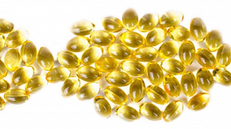Arm mole count 'predicts skin cancer risk’
- Christopher Chanin
- Nov 4, 2015
- 3 min read
Having more than 11 moles on one arm indicates a higher-than-average risk of skin cancer or melanoma, research suggests.
Counting moles on the right arm was found to be a good indicator of total moles on the body. More than 100 indicates five times the normal risk.
The study, published in the British Journal of Dermatology, used data from 3,000 twins in the UK.
GPs could use the findings to identify those most at risk, it said.
Melanoma is a type of skin cancer affecting more than 13,000 people in the UK each year.
It develops from abnormal moles, so the risk of being diagnosed with a melanoma is linked to the number of moles a patient has.
Researchers from King's College London studied a large group of female twins over a period of eight years, collecting information on skin type, freckles and moles on their bodies.
After repeating the exercise on a smaller group of around 400 men and women with melanoma, they came up with a quick and easy way to assess the risk of skin cancer.
Moles, freckles and melanoma
· Freckles are small usually pale brown areas of skin, which are often temporary and are usually linked to sun exposure
· Moles are small coloured spots on the skin made up of cells called melanocytes, which produce the colour (pigment) in your skin. They are long-lasting and are not directly linked to sun exposure, but excess sun exposure will increase your risk of skin cancer and can make a mole turn malignant
· Moles can be flat, raised, smooth or rough and may have hair growing from them
· They are usually brownish in colour and are circular or oval with a smooth edge
· Most moles are completely harmless
· If you notice any changes to your moles or a worried about them, see your GP
· Things to look for: Uneven colouring, uneven or ragged edges, bleeding, itching, enlargement
Source: NHS Choices

The larger brown circle is a mole. The other brown marks are freckles
Females with more than seven moles on their right arm had nine times the risk of having more than 50 on their whole body.
Those with more than 11 on their right arm were more likely to have more than 100 on their body in total, meaning they were at a higher risk of developing a melanoma.
The findings could help GPs to identify those with an increased risk of developing a melanoma.
Sun safety
What sun protection factor should I use?
The higher the sun protection factor (SPF), the more protection you get. Use sunscreen with a SPF of at least 15. Use broad-spectrum sunscreens, which protect against harmful UVA and UVB rays.
How long can I stay in the sun?
No longer than you would without sunscreen. Sunscreen should not be used as an excuse to stay out in the sun - it offers protection when exposure is unavoidable. The summer sun is most damaging to your skin in the middle of the day.
What should I do if I get sunburn?
Paracetamol or ibuprofen will ease the pain by helping to reduce inflammation caused by sunburn. Sponge sore skin with cool water, then apply after sun or calamine lotion. If you feel unwell or the skin swells badly or blisters, seek medical help. Stay out of the sun until all signs of redness have gone.
Should I cover up my mole when I'm in the sun?
If you have lots of moles or freckles, you're more likely to develop skin cancer, so you need to take extra care. Avoid getting caught out by sunburn. Use shade, clothing and sunscreen with an SPF of at least 15. Keep an eye out for changes to your skin and report these to your doctor without delay.
Source: NHS
Lead author Simone Ribero, of the department of twin research and genetic epidemiology at King's, said: "The findings could have a significant impact for primary care, allowing GPs to more accurately estimate the total number of moles in a patient extremely quickly via an easily accessible body part."
Consultant dermatologist and study co-author Veronique Bataille said if a patient was worried about an abnormal mole and went to see their GP, counting moles on one arm "might ring alarm bells" and highlight those patients who should be seen by a specialist more quickly.
Dr Claire Knight, health information manager at Cancer Research UK, said the study findings were helpful, but added that fewer than half of melanomas develop from existing moles.
"It's important to know what's normal for your skin and to tell your doctor about any change in the size, shape, colour or feel of a mole or a normal patch of skin," she said.
"And don't just look at your arms - melanoma can develop anywhere on the body, and is most common on the trunk in men and the legs in women."











































Comments